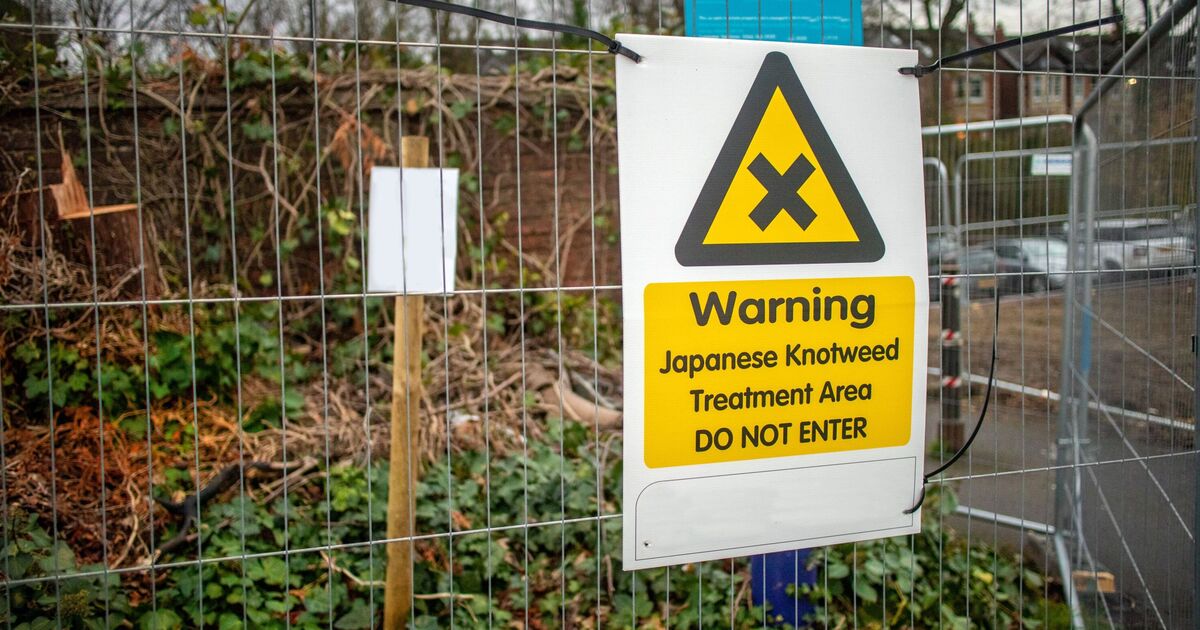Households are being warned about a number of non-native invasive plant species that could cause havoc to their gardens and homes if left to their own devices.
While a number of these plant species are quite well-known like the infamous Japanese Knotweed, there are plenty that are less-recognisable, such as Giant Hogweed and Himalayan Balsam, that can cause just as much damage.
Even the most careful gardeners can be victims of an invasion of these species, and it should be dealt with as soon as possible to limit the damage to your property.
A number of invasive species are listed in Schedule 9 of the Wildlife and Countryside Act (as amended) 1981, which makes it an offence to cause the spread of these species due to the risk posed to native floral species.
Ecologists at Arbtech have highlighted 27 more species that are not yet classed as invasive but could pose an issue if they become widespread in the future.
The seven biggest plant invaders of UK gardens:
- Giant rhubarb (Gunnera tinctoria)
- Curly waterweed (Lagarosiphon major)
- Floating pennywort (Hydrocotyle ranunculoides)
- Giant hogweed (Heracleum mantegazzianum)
- Himalayan balsam (Impatiens gladulifera)
- Japanese Knotweed (Polygonum cuspidatumi)
- Parrot’s feather (Myriophyllum aquaticum)
A spokesperson for Arbtech said: “There are many invasive species of plants which, while not native to the UK, have managed to establish themselves here over many years. By their very nature these plants are usually fast growing and are able to spread vigorously.
“Left unchecked they can create all manner of problems for homeowners from structural damage to presenting a potentially lethal threat to pets if eaten.
“They are usually viewed as weeds although some of them can appear quite attractive and many gardeners can be forgiven for confusing them with flowers and not realising just how much of a problem they present.”
They continued: “By naming the eight most widespread invasive plant species along with a further 27 species we believe households should be on the lookout for, we hope to be able to help gardeners identify issues before they become too problematic.”
The 27 invasive species to be on alert for:
- Alligator weed (Althernathera philoxeroides)
- Asiatic tearthumb (Persicaria perfoliata)
- Balloon vine (Cardiospermum gradiflorum)
- Broadleaft watermilfoil (Myriophyllum heterophyllum)
- Broomsedge bluestem (Andropogon virginicus)
- Chinese bushclover (Lespedeza cuneata)
- Chinese tallow (Tridica sebifera)
- Common milkweed (Asclepia syriaca)
- Crimson fountaingrass (Pennisetum setaceum)
- Eastern baccharis (Baccharis halimifolia)
- Fanwort (Cabomba caroliniana)
- Floating primrose-willow (Ludwigia peploides)
- Golden weath wattle (Acacia saligna)
- Japanese hop (Humulus scandens)
- Japanese stiltgrass (Microstegium vimineum)
- Kudzu vine (Pueraria juliflora)
- Perennial veldt grass (Ehrharta calycina)
- Persian hogweed (Heracleum persicum)
- Purple pampas grass (Cortaderia jubata)
- Salvinia moss (Salvinia molesta)
- Senegal tea plant (Gymnocoronis spilanthoides)
- Sosnowsky’s hogweed (Heracleum sosnowskyi)
- Tree of Heaven (Ailanthus altissima)
- Vine-like fern (Lygodium japonicum)
- Water hyacinth (Eichhornia crassipes)
- Water-primrose (Ludwigia gradiflora)
- Whitetop weed (Pathenium hysterophorus)












